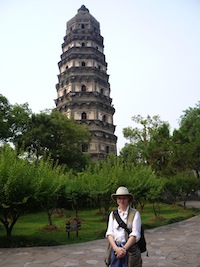Home » Events » Tracy Miller Among Inaugural Mellon Faculty Fellows for Vanderbilt’s Center for Digital Humanities
Tracy Miller Among Inaugural Mellon Faculty Fellows for Vanderbilt’s Center for Digital Humanities
Posted by vrcvanderbilt on Friday, February 10, 2017 in Events, HART, Technology, VRC.
 More than 100 faculty and students recently filled Vanderbilt’s new Center for Digital Humanities to celebrate a dynamic hub in Buttrick Hall for scholarly projects using digital tools. The center will be home each year to a cohort of faculty, postdoctoral, graduate and undergraduate students seeking digital approaches to humanistic scholarship. In addition, it will serve as a resource for faculty and students who seek an introduction to digital humanities.
More than 100 faculty and students recently filled Vanderbilt’s new Center for Digital Humanities to celebrate a dynamic hub in Buttrick Hall for scholarly projects using digital tools. The center will be home each year to a cohort of faculty, postdoctoral, graduate and undergraduate students seeking digital approaches to humanistic scholarship. In addition, it will serve as a resource for faculty and students who seek an introduction to digital humanities.
The Center for Digital Humanities was awarded a $1.5 million grant from the Andrew W. Mellon Foundation to support digital exploration in the humanities. It is receiving additional support from the Office of the Provost and the College of Arts and Science.
“I am profoundly grateful to the Mellon Foundation for making possible this state-of-the-art center,” said Lauren A. Benton, Nelson O. Tyrone Jr. Professor of History and dean of the College of Arts and Science. “I was thrilled to find a strong group of scholars already working in the digital humanities across several schools, departments, centers and the library when I arrived at Vanderbilt in 2015. This new center will bring scholars together to learn from one another as they advance innovative research projects across the humanities.”
Benton recognized the inaugural group of Mellon Faculty Fellows for 2016-2017:
• Lynn Ramey, associate professor of French, who is developing immersive 3D environments in research and teaching on the Middle Ages;
• Jane Landers, Gertrude Conaway Vanderbilt Professor of History, who is constructing a digitized archive of endangered sources on the lives of slaves across the Americas;
• Tracy Miller, associate professor of history of art, who is applying digital tools to understanding traditional Chinese architecture; and
• Steven Wernke, associate professor of anthropology, who gave a short presentation on his use of advanced spatial analysis to enhance archaeological research in the Andes.
The Traditional Chinese Architecture Digital Research Tool is focused “on our earliest extant examples of timber-frame architecture in China, largely dating from the 8th-13th centuries, and includes information on construction techniques as well as stylistic features,” said Miller. “The vast majority of these buildings were constructed for ritual purposes; therefore data on style and structure of the buildings, as well as epigraphic information on site concerning patronage, have the potential to enhance not only our understanding of the aesthetics of traditional Chinese architecture over time and space, but also our understanding of the trade networks, crafts traditions, and spiritual aspirations of people living in pre-modern China.”
For more information, visit the Center for Digital Humanities website or email Mickey Casad, senior lecturer in the Program in Cinema and Media Arts and the Center’s associate director.
*Ann Marie Deer Owens (My VU, February 6, 2017) contributed to this blog post.

©2026 Vanderbilt University ·
Site Development: University Web Communications